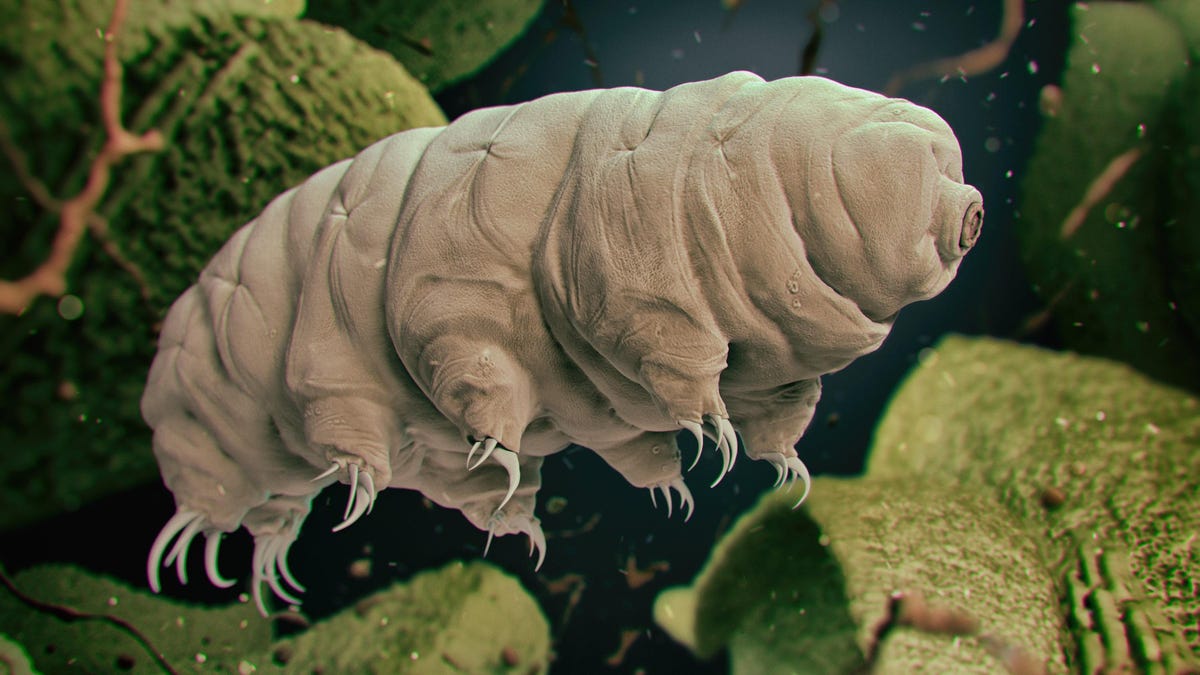
Scientists may have figured out one of the many mysteries surrounding everyone’s favorite microscopic survivor: the tardigrade. In new research, a team appears to have uncovered a key mechanism that these tiny critters use to withstand harsh conditions that would kill almost any other animal.
Tardigrades are a group of eight-legged invertebrates (their closest living relatives are either arthropods or nematodes; more evidence currently supports the latter). Their adorable appearance has earned them the nicknames of “water bears” or “moss piglets.” But it’s their uncanny potential to survive most anything that’s thrown at them that’s really made them popular. Tardigrades can live in some of the most inhospitable places on Earth (and even outside of it) and, if times get really tough, they can also enter a period of death-like dormancy.
Advertisement
This ability is broadly known as cryptobiosis, and the most well-known state of dormancy that tardigrades can accomplish is known as tun. A tardigrade in tun will suck in all eight of its limbs, curl up into a ball, and deplete nearly all of its internal water supply. In this dehydrated state, some tardigrades have been able to endure extreme heat, near absolute-zero temperatures, and exposure to levels of salt that would kill practically everything else in the world. Depending on the species and their environment, it’s possible for tardigrades to remain dormant like this for decades or even longer, until environmental conditions improve.
Advertisement
Over the years, scientists have learned more about the specific tricks that tardigrades use to accomplish and maintain tun. But in a new paper, published in PLOS One, a team of researchers say they’ve discovered at least one of the chemical switches that allows tardigrades to undergo tun in the first place.
Advertisement
In a series of experiments, the team found evidence that reactive oxygen species (ROS) seem to play a key role in mediating the process of tun. ROS are a group of unstable oxygen-containing chemicals produced by the body’s natural breakdown of other molecules. Though the accumulation of certain ROS may contribute to health problems like cancer, these molecules also have important biological functions, such as signaling or triggering other cellular processes.
In tardigrades, the researchers found, ROS seems to signal the oxidation of the amino acid cysteine, which in turn seems to be crucial to the formation of tun. And when the team found ways to turn off the ability to oxidize cysteine in their tiny test subjects, the tardigrades lost their ability to tun as before, further supporting their hypothesis.
Advertisement
The findings are based on studying only one species of tardigrade (Hypsibius exemplaris). And even if this research holds up to further scrutiny, the scientists know that they haven’t solved every aspect of tardigrade survival. Not every known species undergoes tun, and there are other strategies that tardigrades use to endure poor living conditions. But this research should provide new avenues to investigate these amazing animals.
“It’s opened up a whole huge repertoire of experiments we can now pursue,” study author Leslie Hicks, a chemist at the University of North Carolina at Chapel Hill, told Scientific American.
Services Marketplace – Listings, Bookings & Reviews